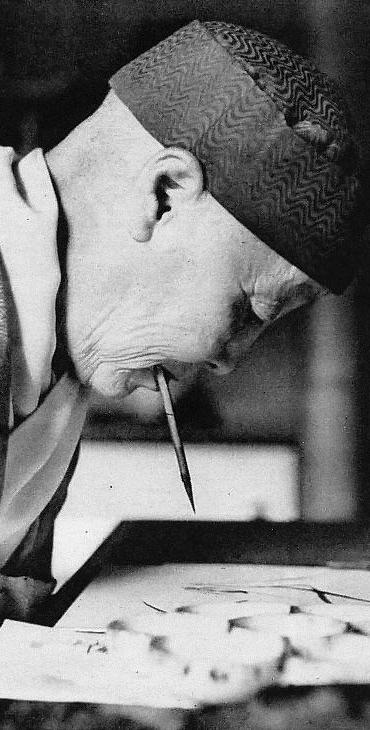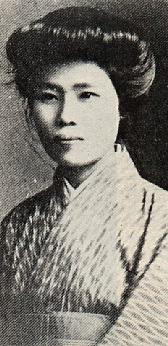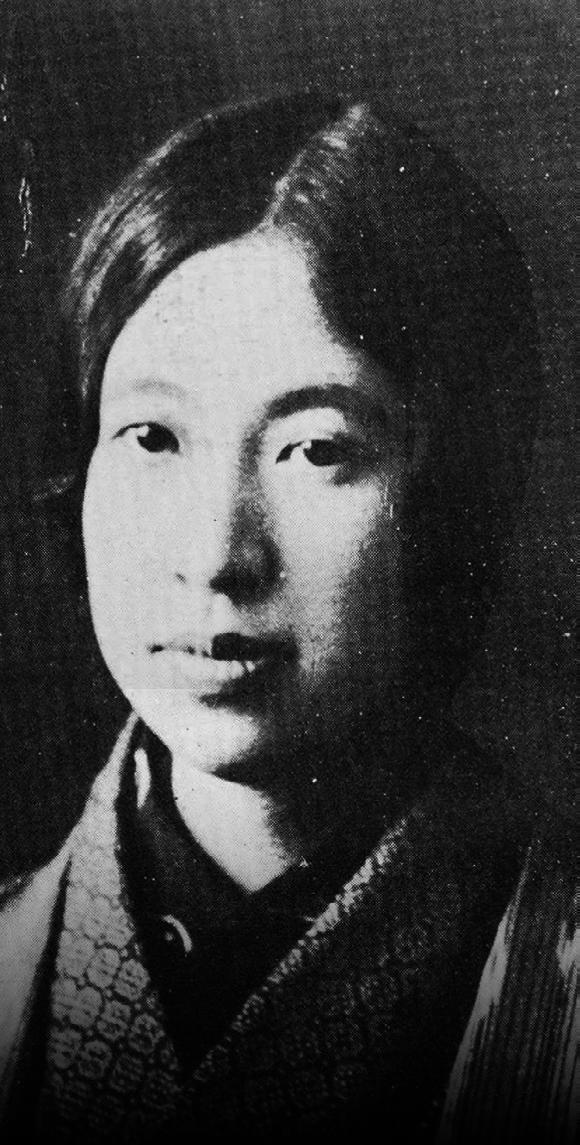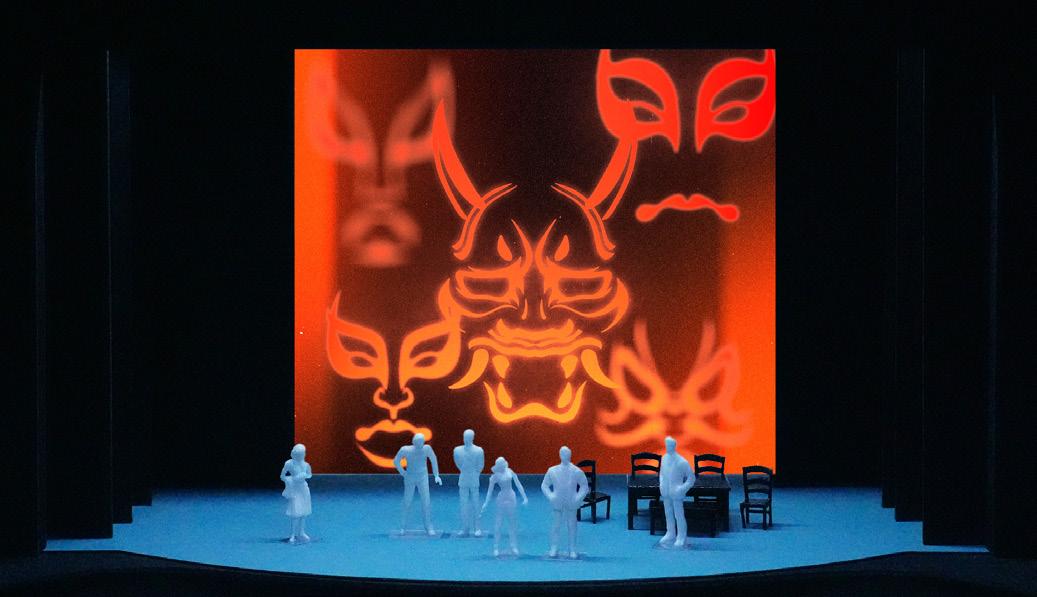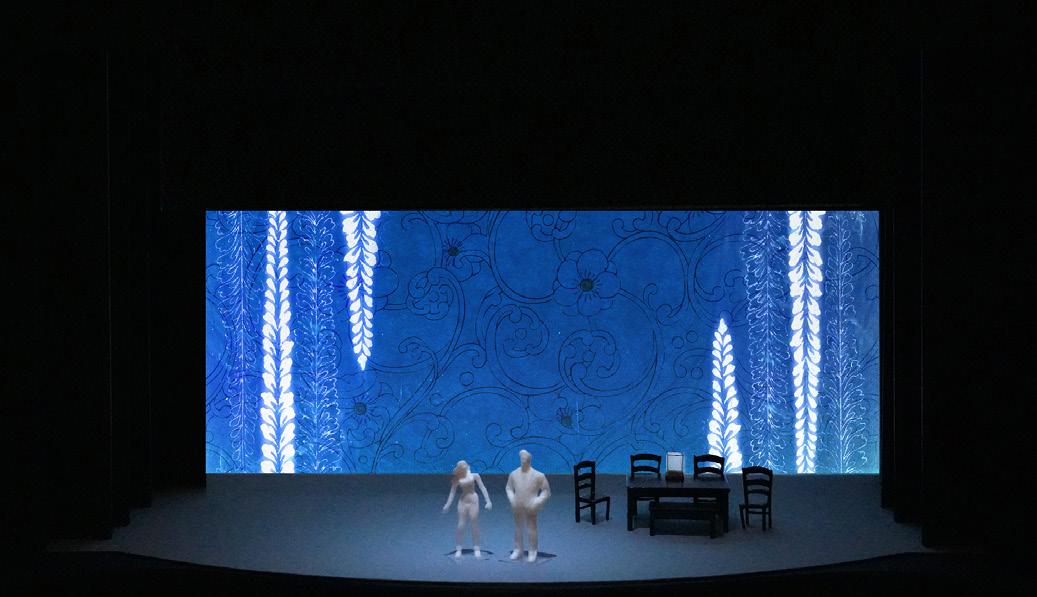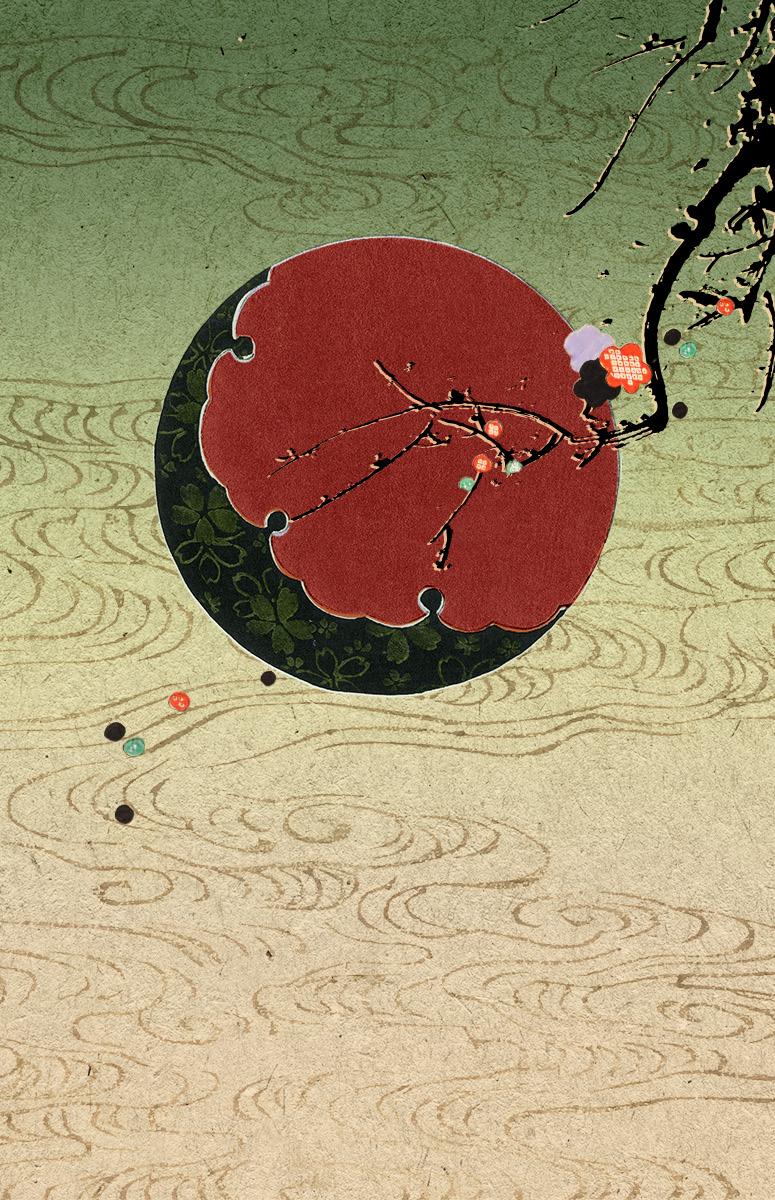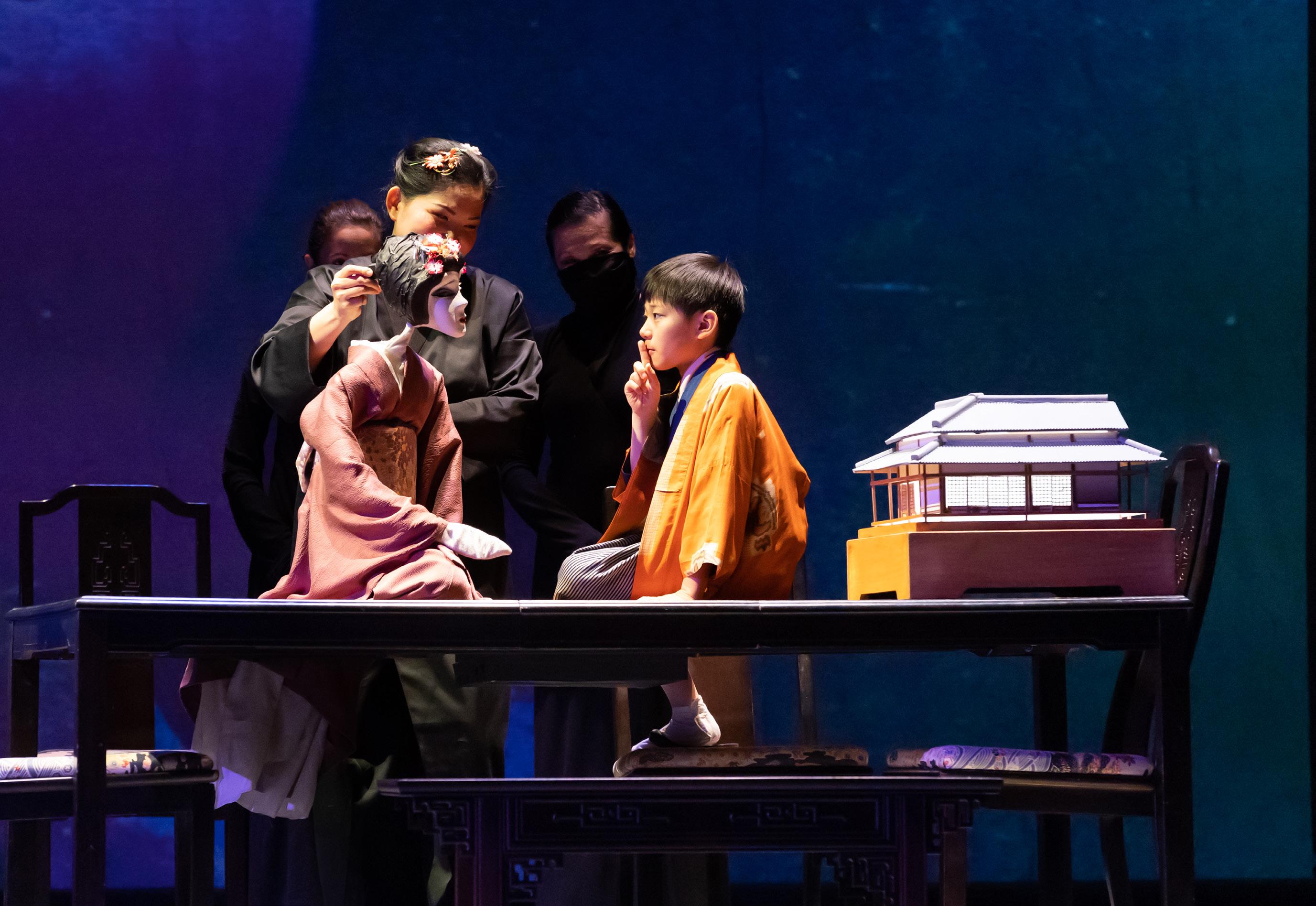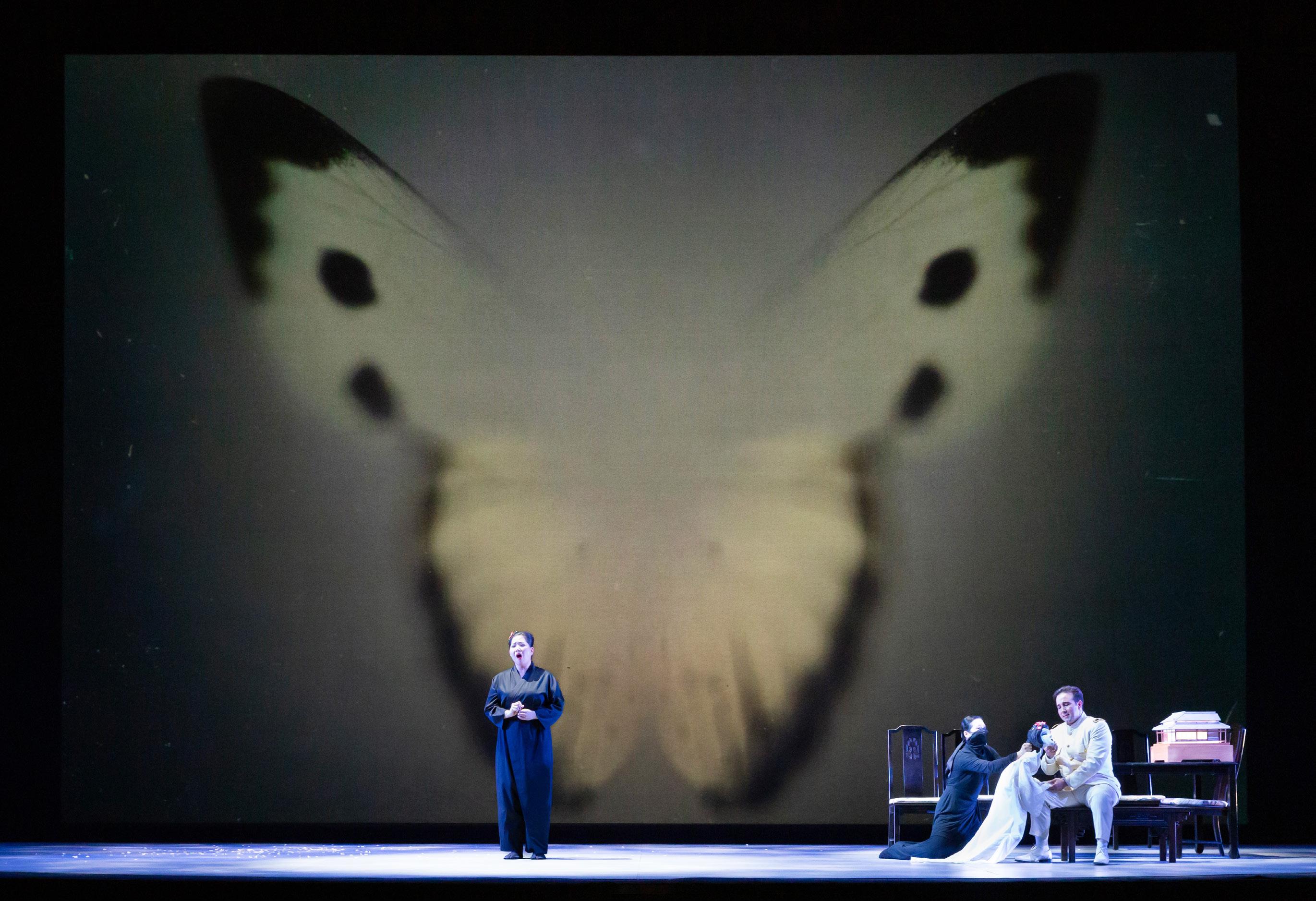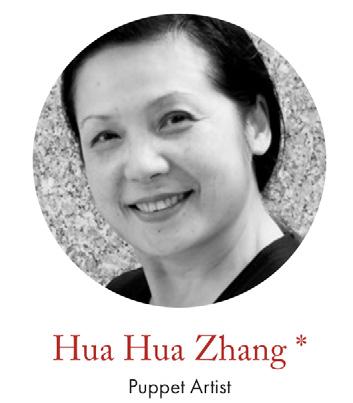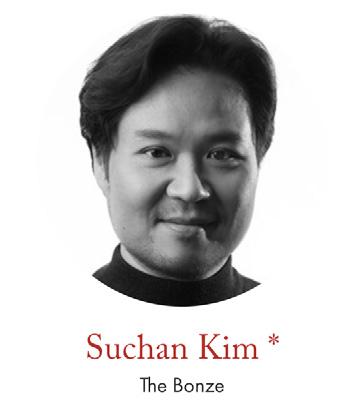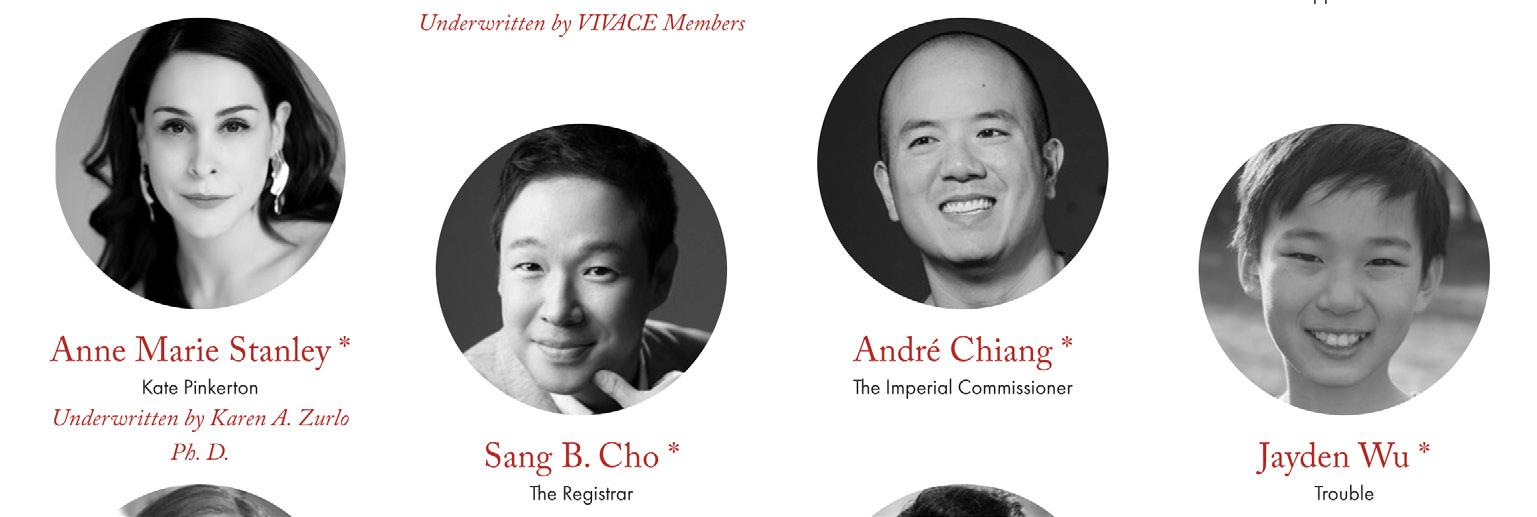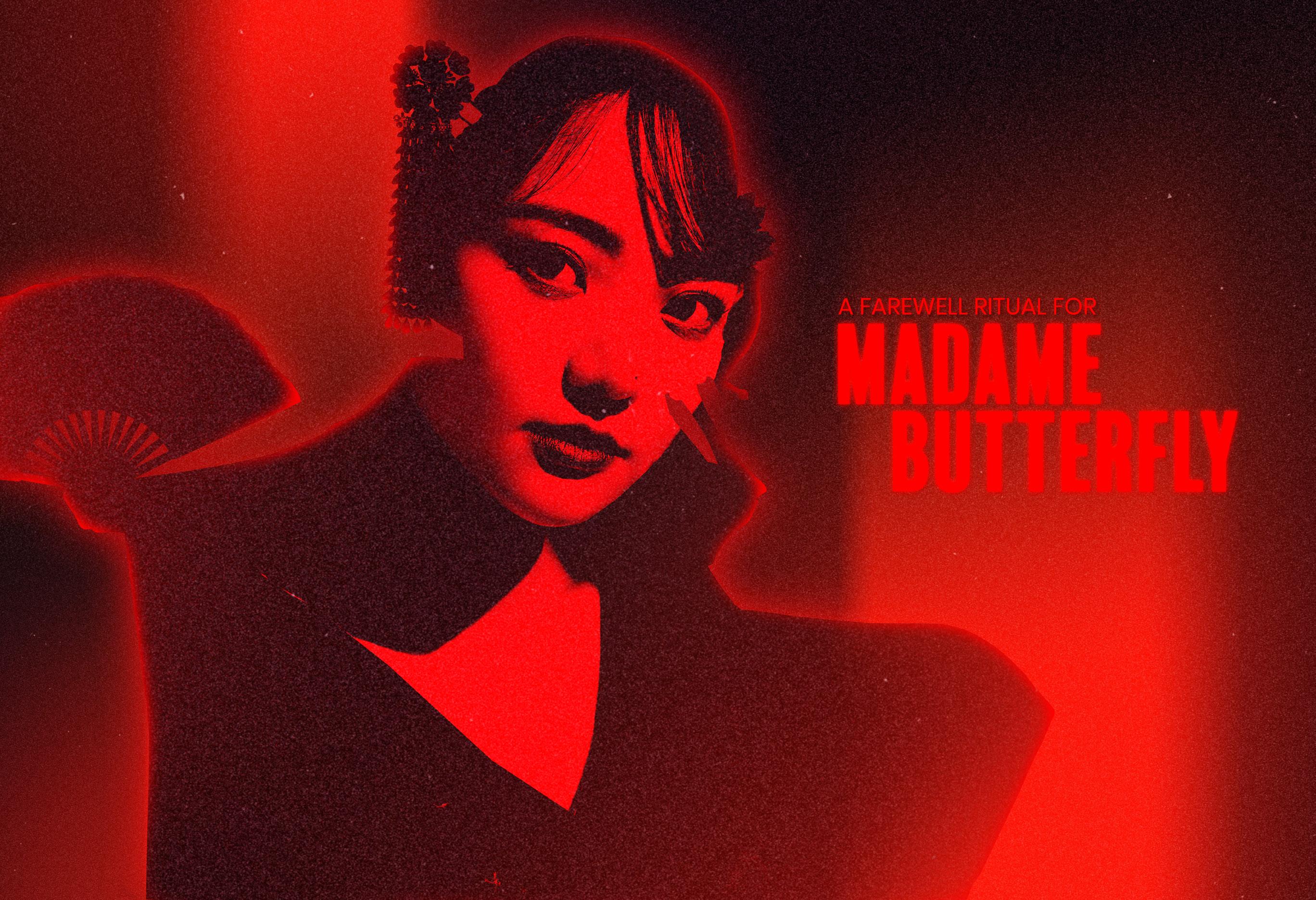
by
Developed for Opera Philadelpia 2024
“Aradientmetamorphisis” “Athrillingnewproduction”
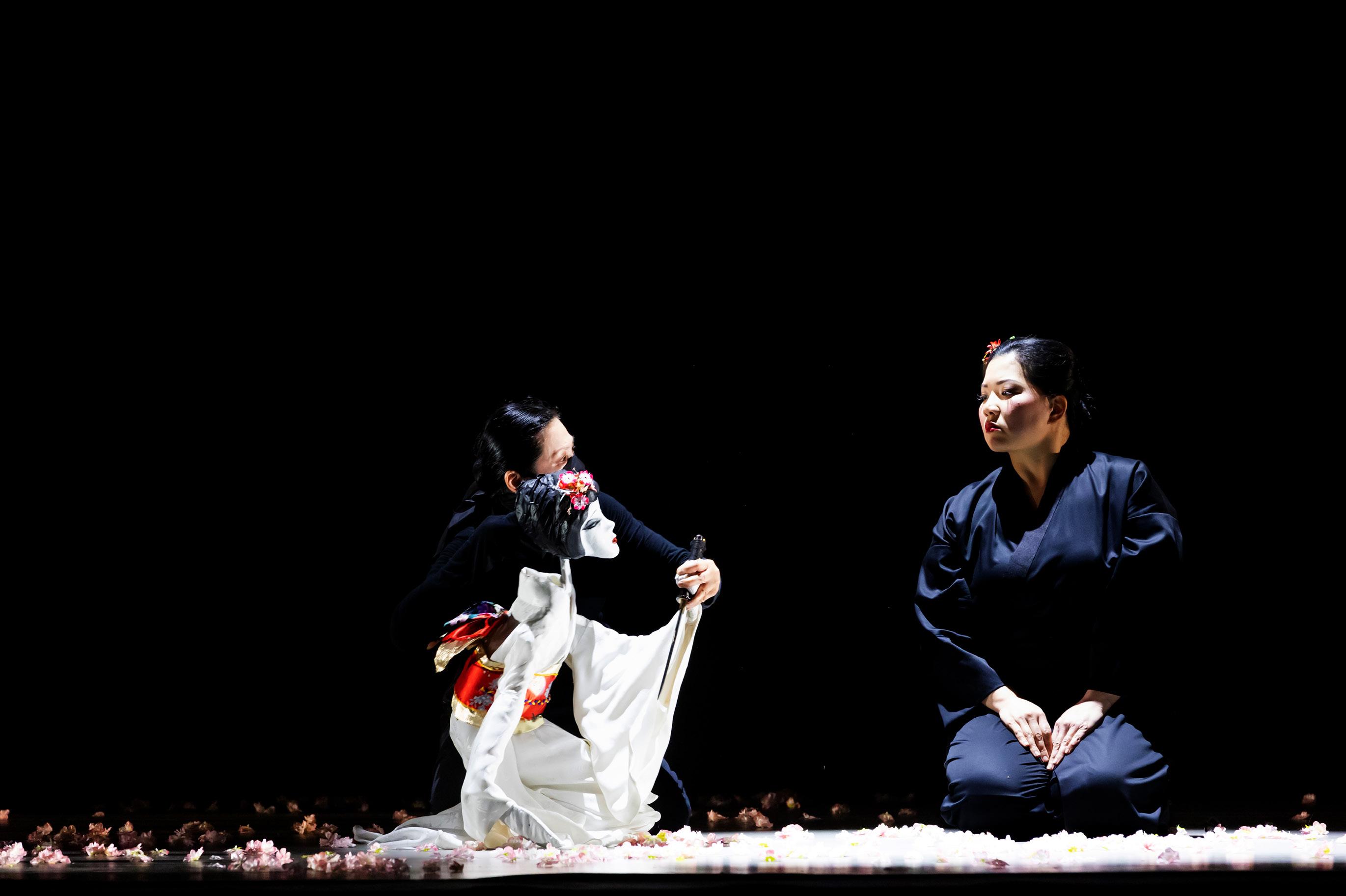
Throughpuppetry,OperaPhiladelphiareclaims Asianagencyinproductionof‘MadameButterfly’
OperaPhiladelphia’s‘MadameButterfly’ evades‘Puccini’strap’withanoperaticpuppet
Our doll has a spirit — this is a Japanese cultural belief. Breathe into it. It will come to life, inheriting our spirit.
Our doll is a vessel of our desire.
Whether that desire is a blessing or a curse.
Our doll will acquire a sense of self. It will think, on its own, what is best for us.
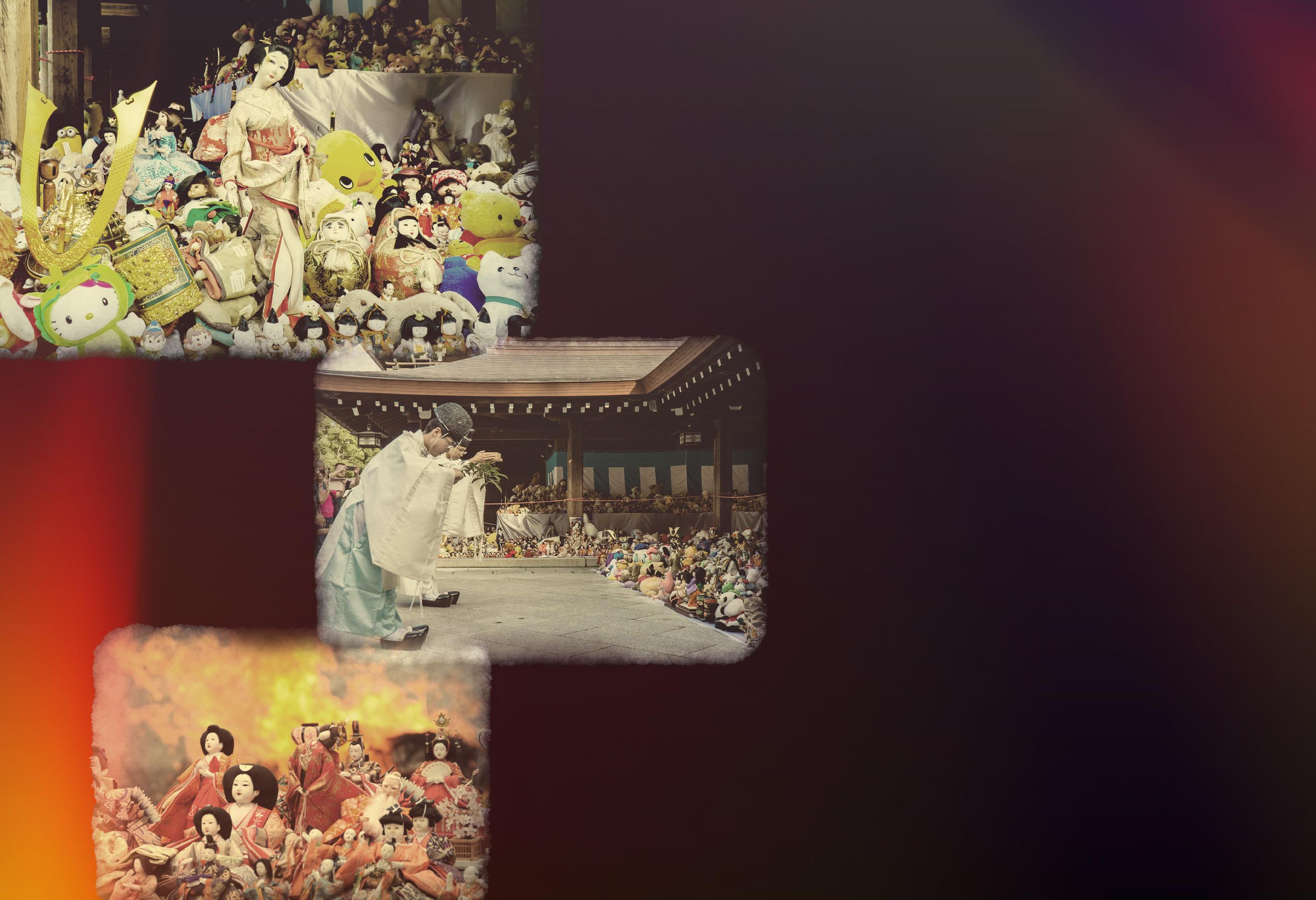
Dolls are not thrown away in Japan.
There is a ceremony to give them a proper good-bye.
It’s an appreciation of the doll — For sharing its time It’s a celebration of us —
As we come to outgrow it
Farewell Ritual
Detaching from Toxic Representation
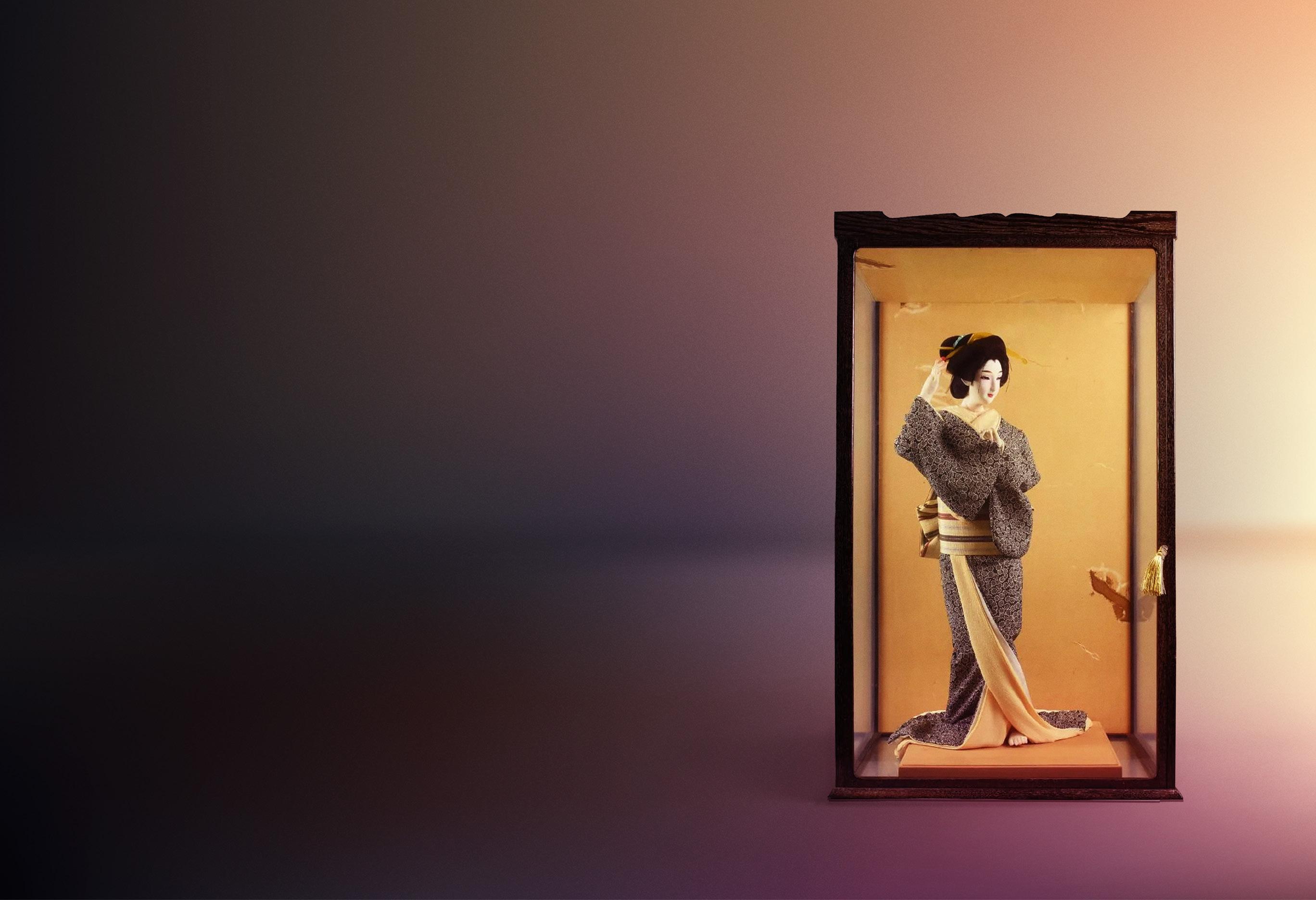
“Unrooted” perhaps best describes how Madame Butterfly lands with me. It’s hard to say whether a story like Butterfly ever happened in the history of Japan. But for an entire industry to continue to celebrate this tale, told millions of times, as representative of Japanese womanhood, is dismissive of all the women who made, and continue to make, the harder choice to survive. It’s difficult for me, and feels wrong, to connect women in Japan now with Cio Cio San, a character engineered as an exotic tragedy.
Puccini trapped Butterfly in a beautiful score. In turn, Butterfly has become a trap: AAPI artists are asked to lend it authenticity and life in new productions that promise much but change little. To liberate ourselves from Puccini’s beautiful trap I propose accepting Cio Cio San as the puppet he created, and rendering her as such onstage. Through this form, our production will become a cautionary tale examining how on-going misrepresentation in content and character portrayal affects us all and takes over, unless and until we put our emphasis on the future -- positivity and empowerment. I hope, through this production, to stimulate conversation toward forward-looking productions.
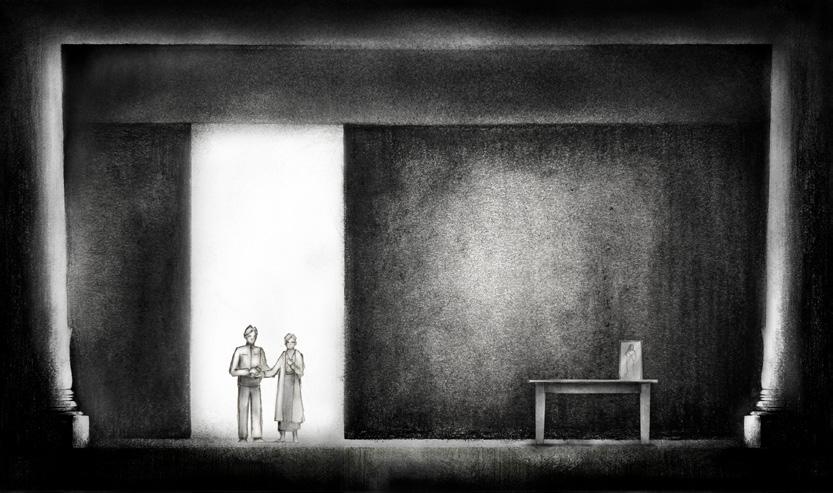
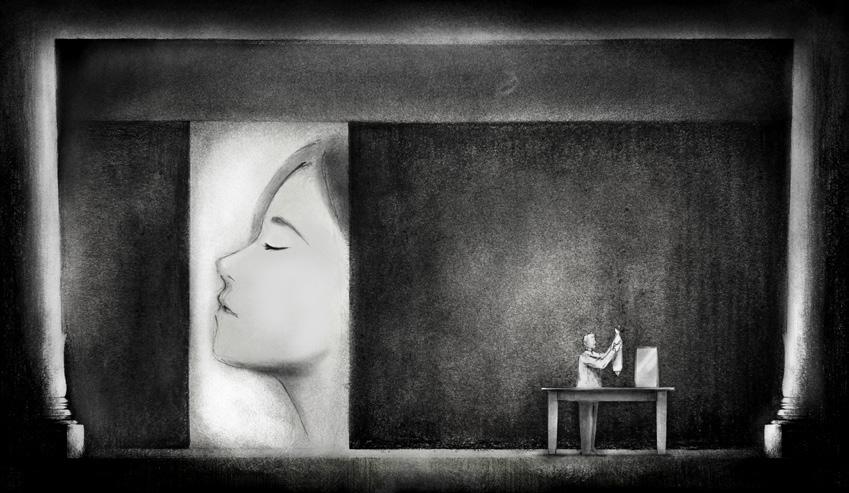
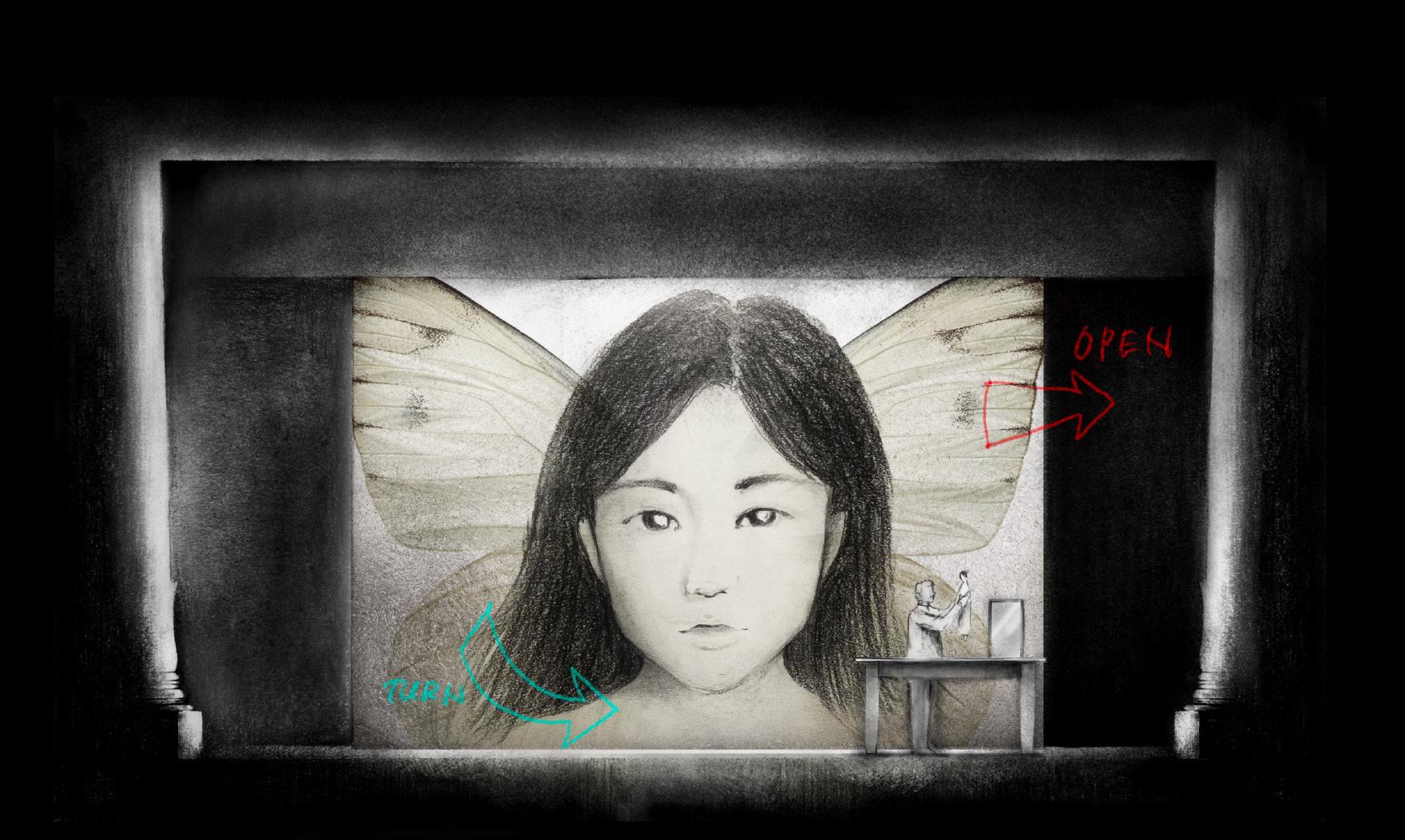
A
Living Soul, Tasked to Play An Orientalist Fantasy The Spirit
In this production Cio Cio San’s body and spirit will be rendered separately: the body - icon of a tragic oriental heroine represented by the doll; and the spirit of the doll - the living soul of a 15 year old Japanese girl.
The opera will start with a pre-show staging of Goro selling a Japanese doll in a glass box. Goro leaves. Pinkerton is alone with the doll. He opens the glass door, and exhales as he admires the doll.
We hear an inhale, and see the spirit of the doll occupying the stage. Pinkerton plays with the doll, and the Spirit of the doll learns how to behave, through Pinkerton. The spirit of the doll now lives in a world with expectations and rules set by Pinkerton.
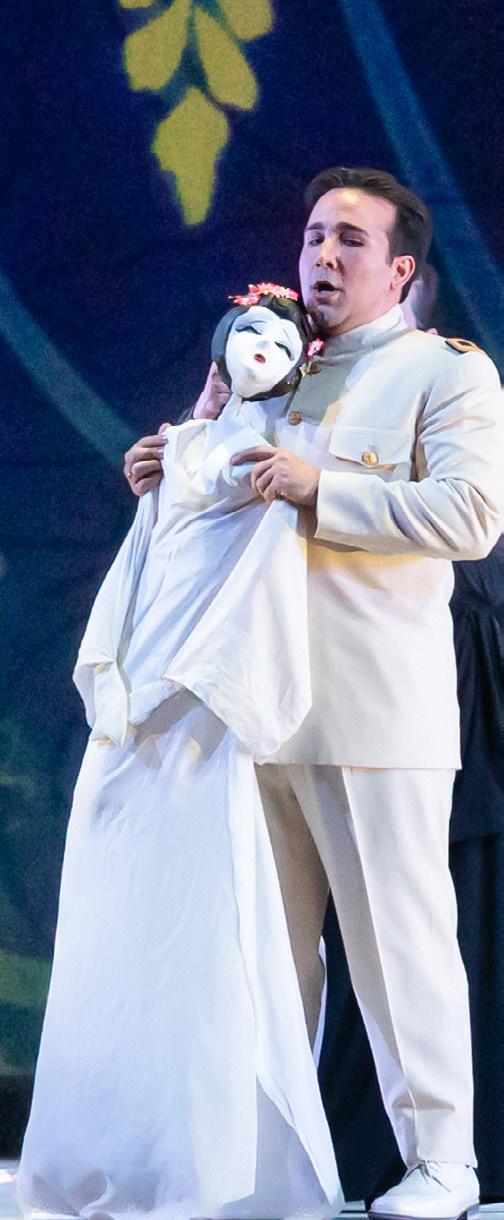
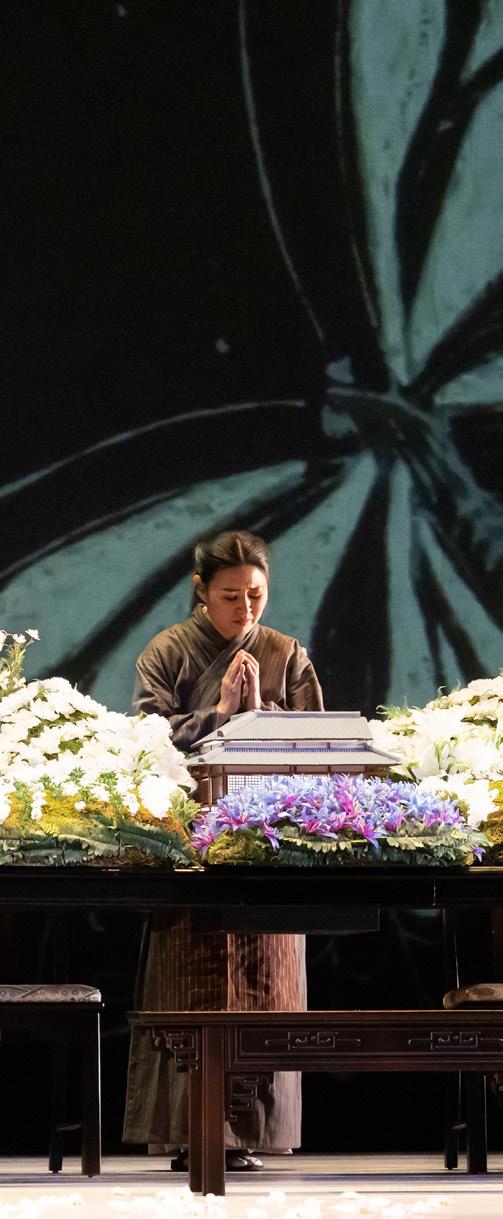
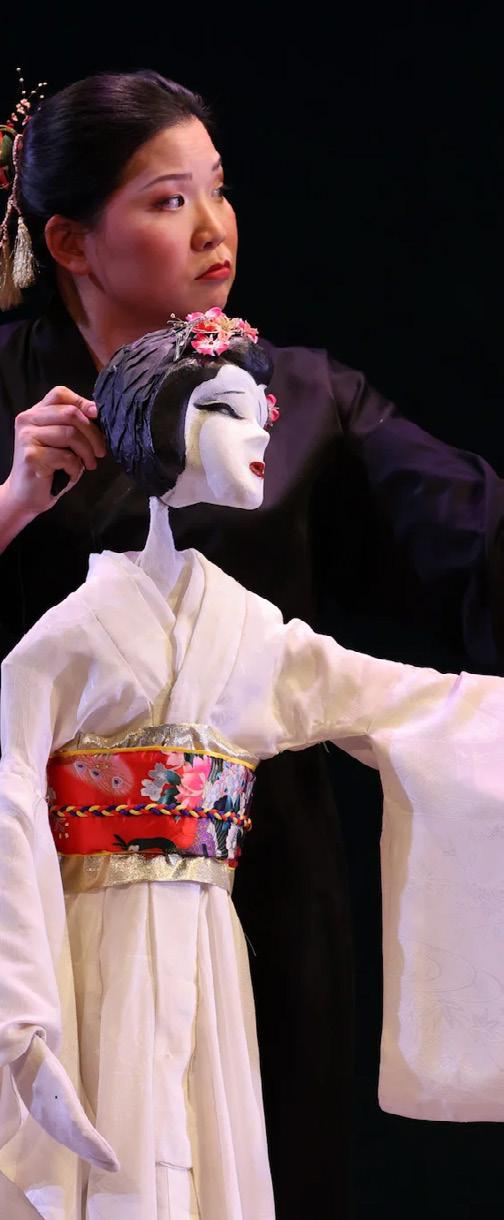
Tradition · Trope · Reality Three Worlds
Though presented in Japanese appearance, Cio Cio San’s behavior as depicted in Madama Butterfly is untrue. It is not that of an actual Japanese woman. The remaining Japanese roles are hyper-characterized to the point of caricature, and the world surrounding Cio Cio San is untrue to Japan.
This production will have three worlds, to illustrate the consequences of producing Madame Butterfly.
American characters will be presented as they typically are in traditional Butterfly productions.
Japanese characters will also wear costumes typical of traditional productions. Their faces will have inaccurate Geisha and Kabuki “inspired” make-up, to convey the caricatures embedded in the score.
The third world will be Cio Cio San’s spirit world. She will have the backstage/Bunraku doll operator appearance. Her spirit is still separated from what society expects her to play. All characters do not see the Spirit.
Harmful or Helpful
The production asks: Do we continue adding to something so un-rooted, or should we leave this world?
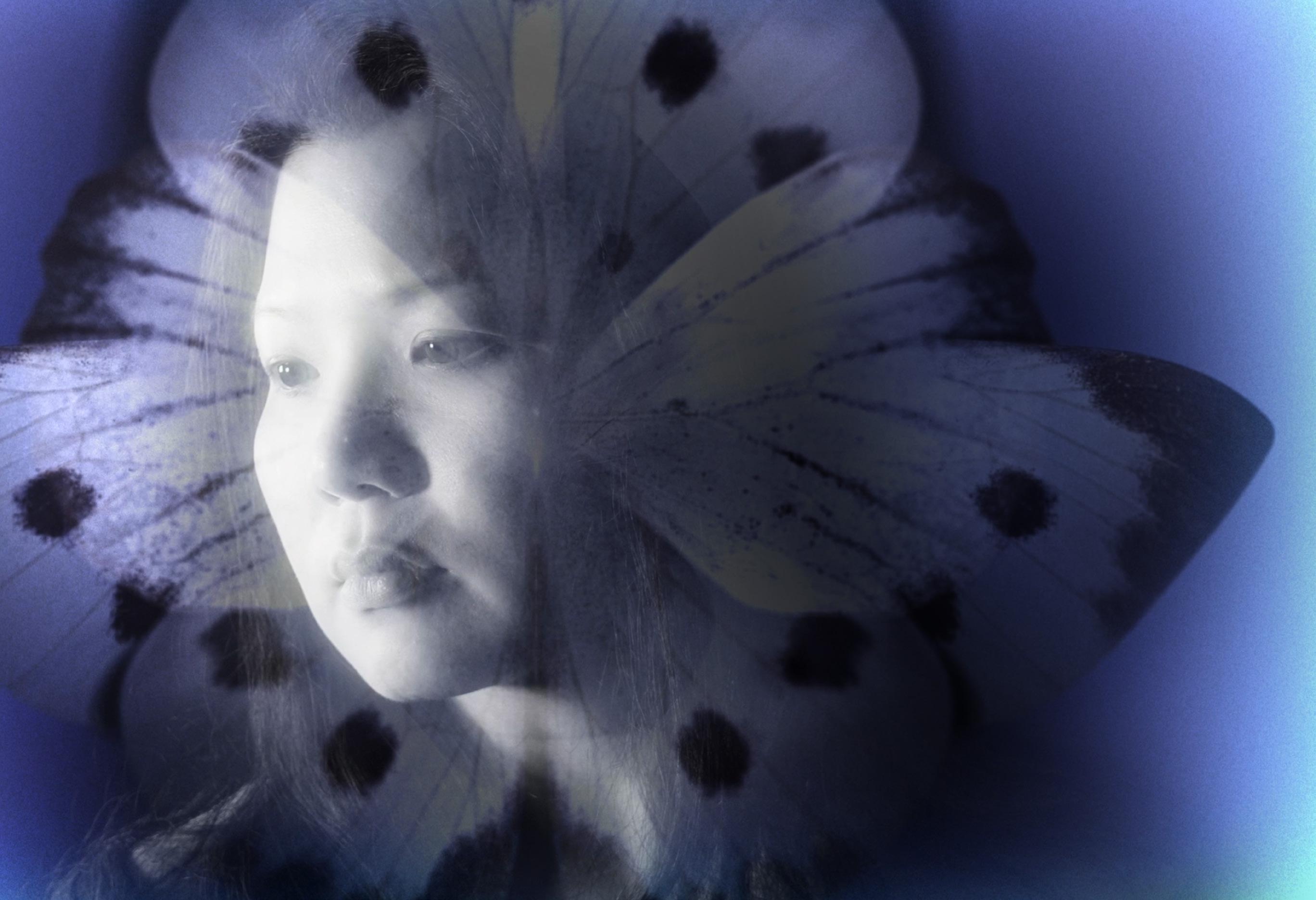
In Act Two, when Pinkerton abandons Cio Cio San doll, she continues to act as Pinkerton has established. As the spirit plays the role further and further, the spirit starts to buy into the caricature’s thoughts and actions.
Once Cio Cio San carries the responsibility of a child - the future – she realizes this made-up world should not be where the child should grow. As fate would have it, Cio-Cio-San kills herself. Only this time, the Spirit of the doll kills the doll and parts from it. As the Spirit leaves this world, the child enters, seeing the Spirit for the first time.

